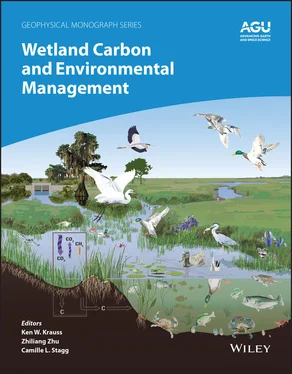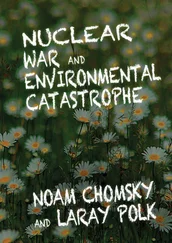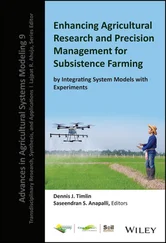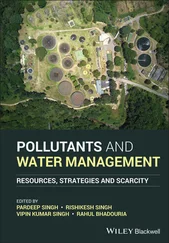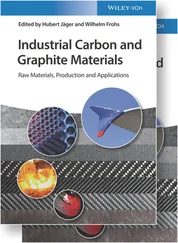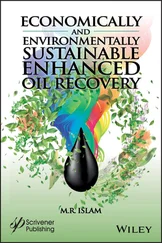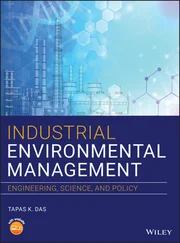Understanding the nexus between healthy landscapes and carbon storage is the crux of this book, which provides readers an overview of management techniques with direct links to impacts on carbon sequestration. Readers will understand the complex chemical interactions that bind carbon to soil and how a healthy wetland breathes more efficiently. The culmination of the book explains how sequestering carbon, by using various management techniques, benefits wetlands by improving overall wetland function. This translates into increased ability to maximize societal and ecological benefits, such as filtering water, capturing sediment, and improving important wetland habitat.
These themes run throughout this book: reviews of the latest science on wetland carbon cycles; processes involved in wetland carbon sequestration and practices that maximize it; comparisons of the quantitative value of sequestering carbon in restored wetlands; descriptions of natural wetlands in contrast with managed or converted wetlands; and the current state of knowledge on the efficacy of restoration strategies among different wetland systems.
Using a combination of experimental and geologic studies, several chapters examine how modification of environmental factors, such as degree of flooding, changing sea level, and sediment supply, affects wetland sequestration of carbon and emission of greenhouse gases. Over long time periods, sediment and carbon accumulation rates in coastal wetlands are closely tied to natural coastal processes. For example, in the Everglades, more water equals more sequestration, but in the Sacramento delta, active flooding experiments did not mitigate soil loss. As scientists are fond of saying, “it’s complicated.”
Authors address tropical, coastal, inland, and northern wetland environments from around the world and include specific management recommendations for these systems. For example, subtropical mariculture ponds, converted from estuarine marsh to shrimp ponds, significantly increase carbon dioxide, methane, and nitrous oxide emissions; however, by applying simple management strategies, operators can reduce excessive greenhouse gas release. Globally, mangrove forests continue to decline. Studies in Guangxi, China, and Can Gio, Vietnam, provide new and sustained approaches to restoring mangroves with economic benefits that compensate local economies and encourage reforestation of this important ecosystem.
This book also investigates which systems store carbon most efficiently per unit basis. In other words, where do you get the biggest bang for the carbon buck? Comparisons between prairies, peatlands, marshes, and mangroves reveal interesting carbon sequestration trends with even more fascinating carbon responses, and many of the answers raise more questions for future research. Why does a prairie pothole wetland store carbon differently in a restored setting than an undisturbed site, even when all conditions appear to be similar? What makes a mangrove forest so carbon‐rich compared to a freshwater marsh?
Through extensive and real‐world application, Wetland Carbon and Environmental Management clearly identifies management responses that improve carbon sequestration while enhancing wetland health and function. The compelling evidence presented by Ken, Camille, Zhiliang, and their co‐authors will strengthen the quality of wetland management and highlight areas of future research that will improve our current knowledge and understanding. We believe this book will become a primary source of information that will lead to improved techniques and practices – and help preserve Thoreau’s sacred swamps around the world for the benefit and fascination of future generations.
James Scott Covington United States Fish and Wildlife Service
Debra A. Willard United States Geological Survey
The idea for this book, including its organization and contents, has its origin in the latest environmental and climate policy requirements in the United States, as well as science advances. In 2007, the U.S. Congress passed the Energy Independence and Security Act (EISA), from which Section 712 required U.S. Federal agencies to provide a better understanding of carbon and greenhouse gas fluxes across the United States. As a result, large‐scale and coordinated efforts were launched to assess carbon storage, carbon fluxes, and greenhouse gas fluxes – including CO 2, CH 4, and N 2O – from all major terrestrial and freshwater aquatic ecosystems, including forest, grassland/shrub, agricultural lands, wetlands, and rivers, streams, lakes, and impoundments. The EISA assessment produced major results (Selmants et al., 2017; Zhu, 2011; Zhu & McGuire, 2016; Zhu & Reed, 2012, 2014), but recognized that wetlands remained a significant source of uncertainty, especially for those wetlands that were being actively managed. The more recent Second State of the Carbon Cycle Report by the U.S. Global Change Research Program (USGCRP), which devoted two separate chapters to inland and coastal wetlands, respectively, noted that large knowledge gaps still remain, ranging from inadequate analysis of restored and managed wetlands, and consequences of management decisions, to future wetland responses to climate change (USGCRP, 2018). In recent literature, wetland management is suggested as a potential natural solution to mitigate climate change (Fargione et al., 2018, Kroeger et al., 2017) and help offset direct losses of wetlands from sea‐level rise, subsidence, and coastal erosion (Wang et al., 2017). The recognition that a synthesis of wetland carbon management was urgently needed was the genesis of Wetland Carbon and Environmental Management ; discerning the relationships between wetland management and carbon flux (loss or gain) is an international goal.
The management of wetlands to improve carbon storage, or to prevent carbon loss, is inherent to wetland stewardship. Wetland ecosystem health and sustainability, and persistence and loss, are linked to the same processes that promote carbon sequestration. Indeed, wetlands store more carbon per unit area than most other ecosystems on the planet (Nahlik & Fennessy, 2016). Wetland plant primary productivity facilitates the uptake of CO 2from the atmosphere, and that carbon captured is committed to plant biomass both aboveground and belowground. While aboveground carbon biomass experiences different fates dependent on disturbance regime (e.g., cyclones, fire, etc.), carbon produced and stored belowground can accumulate and persist for millennia because of the presence of water, which facilitates reduced oxygen diffusion into the soil for part or most of the growing season in wetlands and decreases decomposition of organic matter. Belowground carbon is a mix of inputs from root growth and litter from senesced aboveground structures (often termed autochthonous) and that carbon combines with both inorganic and organic carbon deposited on the surface of wetlands from off‐site sources (often termed allochthonous). The last few decades of dedicated research on carbon and wetlands have identified a number of links between environmental management strategies and their impacts on the biogeochemical processes such as carbon sequestration, burial, emissions, and export, and ultimately the balance of carbon in the wetland ecosystem. The management of water offers a primary tool.
Where major changes to the hydrology of wetlands have been instituted (e.g., tile draining of prairie potholes in the northern US and Canada, channeling or extracting seasonal sheet flow to drain the Everglades wetland ecosystem in Florida, leveeing large wetland areas in Europe, etc.), carbon armored by years of low oxygen diffusion into the soil is released. In addition, soil surface elevations are reduced and the naturally established long‐term ecosystem balance among plant primary productivity, carbon, nutrient, and water cycling is affected permanently. More persistent flooding and reduced mineralization of nutrients further leads to reduced primary productivity, perpetuating degradation. Causes of global environmental change are less important to debate than the net effect of those changes, and locally imposed changes (e.g., cutting off tides, dumping nutrients, etc.), on preventing the wetland ecosystem from responding as it naturally would. Coastal and inland wetlands, as well as herbaceous and forested wetlands, are affected by environmental change, which also means that environmental management, if implemented properly, can potentially mitigate the additional CO 2or CH 4released during the degradative process.
Читать дальше
